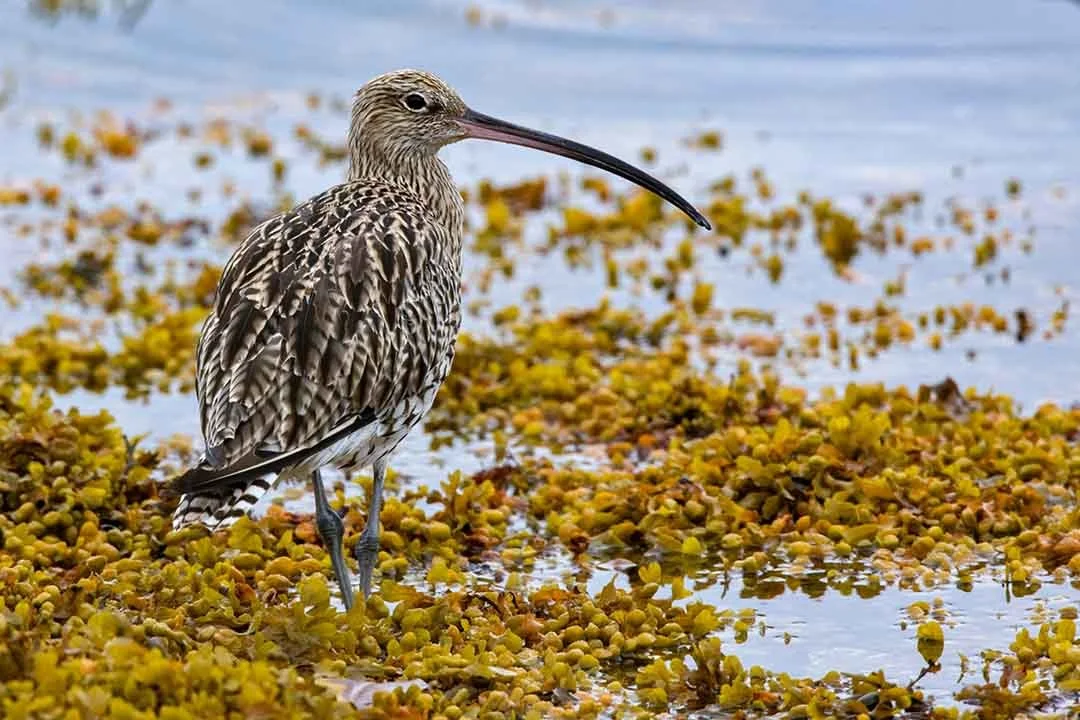Protecting Ireland’s Wetlands and Wildlife: Why World Curlew Day Matters
April 21st is World Curlew Day, a time to reflect on the incredible but fragile beauty of Ireland’s wetlands—and the species that depend on them.
Why Protecting the Curlew Is Important
Once a familiar sight in Ireland’s open landscapes, the Eurasian curlew has become a symbol of dramatic change in our natural environment. According to data from BirdWatchIreland 90% of the Irish breeding population has been lost since the 1970s and there are fewer than 150 breeding pairs remaining today. This makes it one of the most threatened bird species in the country.
Curlews depend on a range of wetland habitats - intact bogs, wet grasslands, heaths, and extensive farmland - to breed successfully. These landscapes have been progressively lost or degraded through drainage, intensification, afforestation, and fragmentation, leaving curlews with fewer and poorer places to nest and rear their chicks.
But the curlew is more than just a single species in trouble - it’s an indicator of wider ecosystem health. When curlews thrive, it means that a host of other wetland species—birds, invertebrates, and plants - have the chance to thrive too. When they disappear, it signals that the balance of the ecosystem is breaking down. Protecting curlews means protecting wetlands. And protecting wetlands means safeguarding biodiversity, improving carbon storage, managing flood risk, and maintaining the natural heritage that gives our landscapes their character.
World Curlew Day reminds us of what's at stake - not only for this bird, but for the wider web of life that wetlands support.
At Wetland Surveys Ireland, we work with landowners, local authorities, and developers to protect and restore these vital ecosystems—balancing conservation with sustainable land use, planning, and development.
Wetlands under pressure
Wetlands like bogs, fens, wet grasslands, and estuaries are some of Ireland’s richest ecosystems. They support countless species, including breeding and wintering birds like the curlew, snipe, lapwing, and golden plover. But these habitats are under threat from drainage, development, peat extraction, and climate change.
When wetlands are lost or degraded, so too are the species that rely on them.
How our work supports wetland conservation
Wetland Surveys Ireland provides specialist ecological services that support the conservation and restoration of wetlands and their wildlife, including:
Wetland and habitat surveys for local authorities, infrastructure projects, and private clients
Peatland and bog restoration advice, including baseline surveys, monitoring and management plans
Appropriate Assessment (AA) and Ecological Impact Assessment (EcIA) reports for planning applications near protected wetland areas
We’re also proud of our role in administering large scale Department of Agriculture, Fisheries and the Marine funded agri-environmental schemes. Examples include the ACRES West Connacht Co-operation Project, the FarmPEAT EIP and the Pearl Mussel Project EIP (2018 – 2023) which have worked closely with farmers and communities to improve outcomes for biodiversity - including curlews and other priority species.
Planning and land use
If you're planning a project near a wetland or bog, or in areas where protected birds like the curlew breed or forage, you may need a bird survey, a wetland assessment, or an Appropriate Assessment as part of your planning application.
Our team has the expertise to identify risks early, work with planners and regulators, and find practical solutions that allow developments to move forward while protecting vulnerable habitats.
World Curlew Day is a reminder…
…that conserving biodiversity isn’t just about rare species - it’s about the landscapes and ecosystems that support them. If you’re a landowner, planner, or developer and you think your project might involve a wetland or protected bird habitat, get in touch. We’re here to help you understand what’s needed and how to do things right.
Let’s protect our wetlands - for the curlew, and for generations to come.

